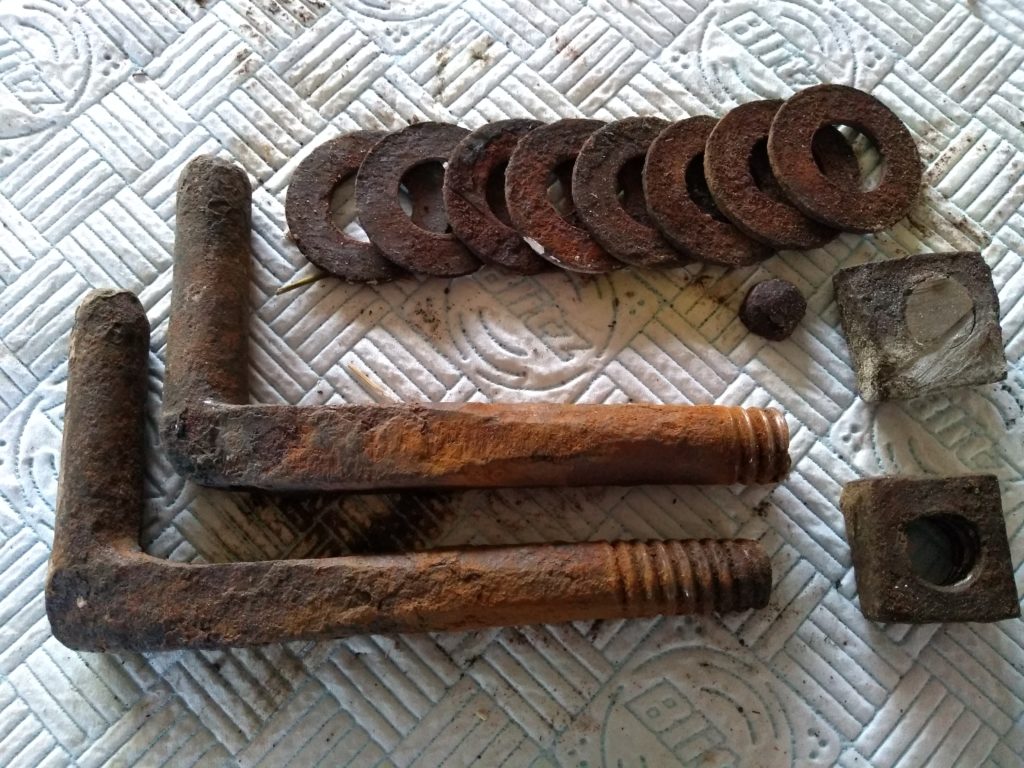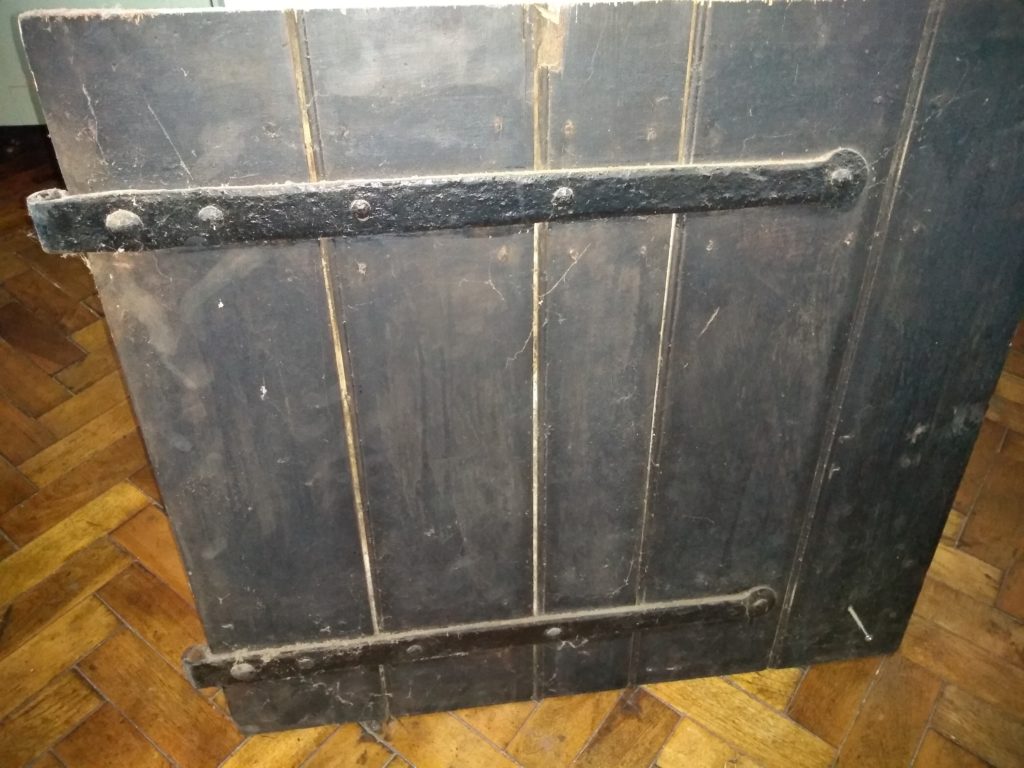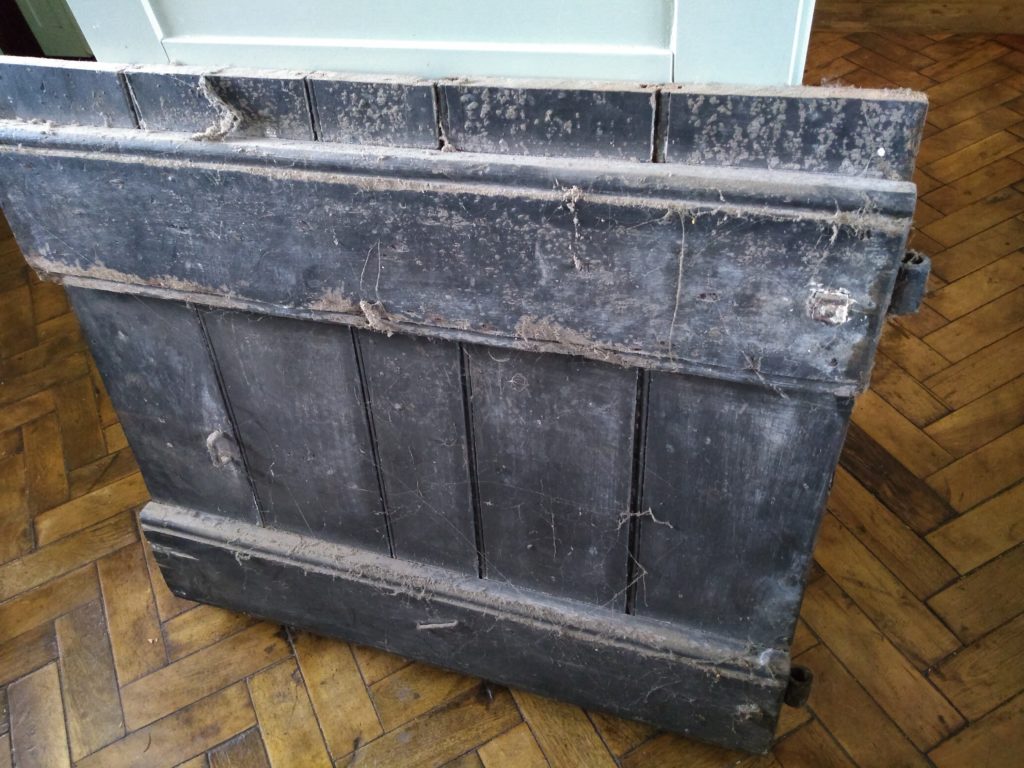
My hot and cold water tanks are accessed through a small door.
This door has never closed properly and opens into the tank space, making it difficult to move around. I’m having some work done in there, so though it a good idea to improve access, hoover up all the dust and clean out the debris left when things were installed several decades ago.
As is usual, this fairly trivial task becomes more complex. However, I found the hinges to the access door rather interesting.
The design is remarkably elegant. The differences between the two hinges make me think they are hand forged, one has the pin coming from a flat surface, the other has a slight fillet on it.
The pin is round, the shaft is square, it then tapers back to round and is threaded.
To install these hinges, I would imagine you drill a hole the size of the thread, insert the hinge and tap it in until the round/square taper starts to engage.
With both hinges partially engaged, you hang the door on them and start tightening the nuts on the back until the door is pulled in flush top and bottom. the square section will be nicely engaged with the hole and the brackets won’t be able to rotate any more.
It is a neat, fairly elegant solution to providing a generic hinge for timber framed doorways supporting doors of variable thickness, and maybe even not too straight.
Were these hinges hand forged? Well there is a lot of variation in the bottom edge. The corner radius is very different. There are clearly hammer marks on the section where it tapers from square to round. However, the roundness of the pin is excellent. The thread seems rather blunt – maybe swaged in rather than cut, and there isn’t much of it, so it was probably one of the more complex operations.
The nuts are square-ish. Their holes are not quite on centre. I’d guess these were not machine made.
I’m going to reuse these hinges. I’ll cut the threaded portion off and weld on some threaded rod, then I can use metric nuts and washers. I’m sure they’ll come up nice if I put them in the forge for a few minutes, wire brush them and give them a coat of linseed oil while they are still hot.
The door needs a bit more work.


The front looks fine, the hinges have good paint on them, the door has a good patina, and you can see where the panels making up the door have shrunk slightly. I don’t think the door is old at all – it has floating tenons rather than butt joints, and the pattern on the back rails is the same as all the other recent timber in the house. So it dates from a time when electric router tables were common (say 1990s). However, I like it so I’m going to keep it.
Ideally, I’d strip the reinforcements off the back and replace them with timber battens that would snugly fit the door aperture. Keep the drafts and plumbing noise down.
However, I don’t know if I’ll be able to undo the square nuts that hold the hinges on and remove the rails. I may have to pack the whole outer edge with fresh timber to allow it to seat snugly against the frame instead.
So a bit of work to do to fix and refit the door, but at least I got everything clean and hoovered up there and some loft boards down so it is safe for the heating guy to work up there.
